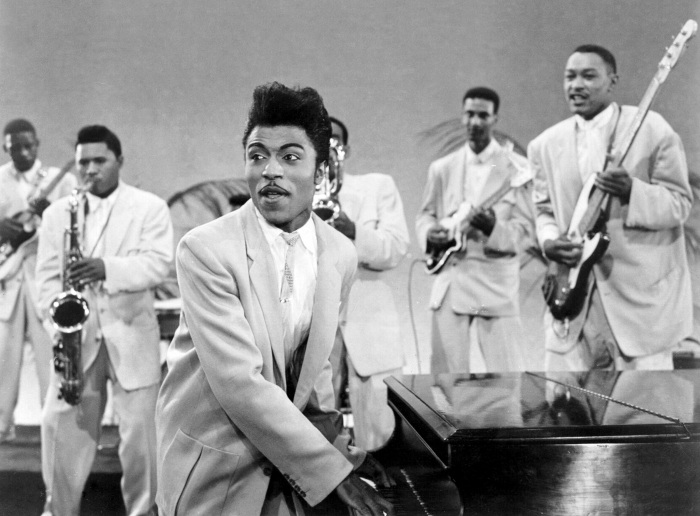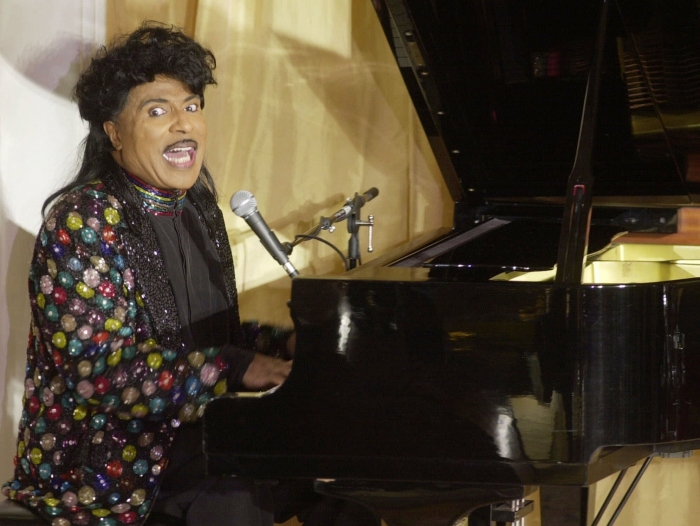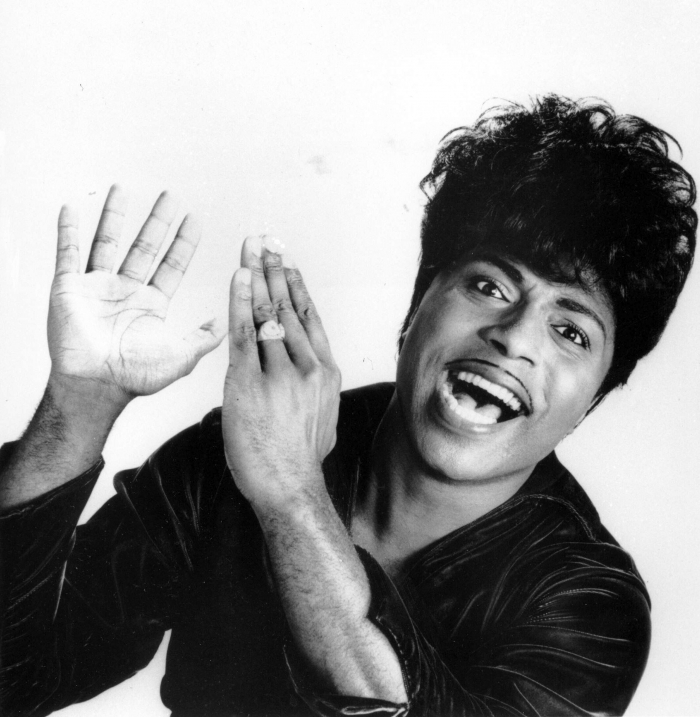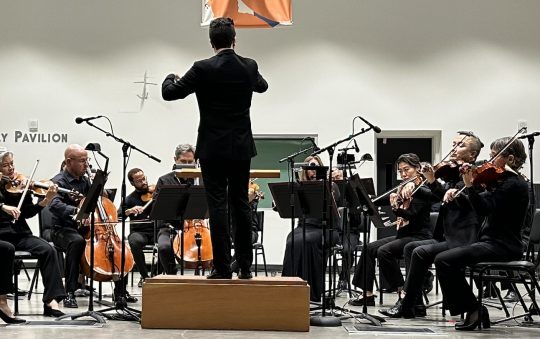
When I think about Little Richard, I think of a big ball of talent on the piano, singing and pulling you into his performances. If he wasn’t telling us to “shut up,” he was singing that famous note, “Wooooo!” He was a rock ‘n’ roll pioneer who amazed us with electrifying piano skills and a style that couldn’t be imitated—it was his alone. The world was stunned on Saturday, May 9, when it learned that the musical icon had passed away. Little Richard leaves a legacy few in the music industry get to realize and a number of hits that are a part of the fabric of American culture and music.
Born Richard Wayne Penniman on December 5, 1932, he was one of 12 children from Macon, Georgia. His musical roots started when learning gospel music in the Pentecostal churches. When he reached his teen years, Richard left home to perform rhythm and blues in nightclubs and medicine shows, which were traveling groups that put on performances and entertainment acts with sales pitches peddling miracle cures, elixirs and other various products between 1850 and 1930.
His early recordings in the 1950s, featured more soothing, jump-blues style, much different from his later singing style. He later took the name “Little Richard,” and became well-known for his high-energy antics on stage.
It was at a recording session at J & M Studio in New Orleans, Louisiana, where everything would change for Little Richard. During the session, he yelled those famous lines,“Tutti Frutti,” and “A wop bop a loo bop, a lop bam boom!”
Releasing songs on Specialty Records, his performances broke color lines and generated hits such as “Rip It Up,” “Long Tall Sally,” “Ready Teddy,” “Good Golly, Miss Molly,” and “Send Me Some Lovin’,” among others. In the mid-1950s, his croons, wails, and screams were new to popular music and made a distinguishing impression from other artists. Along with Elvis Presley, Little Richard’s singing and musicianship inspired up-and-coming rock musicians.
His success and notoriety got him featured in some of the earliest rock-and-roll movies, like “Don’t Knock the Rock,” “The Girl Can’t Help It” and “Mr. Rock and Roll.”

Little Richard received a spiritual calling at the peak of his career and left the music business. He enrolled in Bible college, and became a traveling Evangelical preacher.
The Beatles took the music world by storm in the mid-1960s singing several of his classic songs and openly paying tribute to Little Richard. This renewed attention inspired him to return to the stage and the recording studio for another round at his musical career.
He did three tours of England between 1962 and 1964, with the Beatles and the Rolling Stones as opening acts. In the States, he put together a band that included a soon-to-be-famous guitarist, Jimi Hendrix. He recorded a new song, “Bama Lama Bama Loo” in 1964, but interests had changed in music and youth weren’t interested. Little Richard signed a recording contract in the early 1970s, which produced three albums: “The Rill Thing,” “King of Rock ’n’ Roll,” and “Second Coming.” The albums showcased his talent, but lacked the hard rock soul he was known for.
In 1968, Richard hit Las Vegas and relaunched his career, and in two years, had another hit single and made the cover of Rolling Stone. By the mid-1970s, struggling with drugs and his sexuality, Little Richard once again left the music industry.
He continued to appear at concerts and festivals until 2013, when he announced his retirement. Little Richard’s music is on countless soundtracks in television and film and has made numerous appearances as himself in films such as “Why Do Fools Fall in Love” in 1998.
When the Rock and Roll Hall of Fame opened in 1986, he was among the charter members with Elvis Presley, Berry, Buddy Holly, Jerry Lee Lewis, Sam Cooke and others. Little Richard had a street named after him in Macon, Georgia and later, received a star on the Hollywood Walk of Fame. In August 2002, he announced his retirement from live performing, but would frequently be seen on television, including a humorous appearance on a 2006 commercial for GEICO insurance.
Pastor Bill Minson, a close friend of Little Richard’s, told The Associated Press that Little Richard died Saturday morning. Minson added that the family was not releasing the cause of death.

Tributes to Little Richard rolled out across social media over the weekend. Here are some of those comments:
“The Originator. The innovator. The musician, performer who influenced generations of artists … has left. You were AWESOME #LittleRichard!!! Your talent will reverberate forever. Well done sir. Rest well”—Viola Davis
“Little Richard, the #architect & founding father of #rockandroll died this morning. I was blessed to portray him in his authorized #biopic #littlerichard, directed by my #fiveheartbeats brother “Duck” @Robert_Townsend #RIP. You made a mark on the world that will #neverbeforgotten”—Leon
“God bless his soul. I loved myself some #LittleRichard. Rest in power and let me start twisting and shouting out the glory.”—Donna Brazile
“The legend who opened the way … may you rest with the Highest”—Naomi Campbell
“I want to express my condolences on the passing of one of music’s greats.”—Billy Dee Williams
“You can’t tell the story of Rock ‘n’ Roll without the story of #LittleRichard”—Billboard
“’I was the architect of Rock!’ He demanded his flowers while alive. One of my favorite entertainers of all time. Rest in Praise Richard Wayne Penniman”—Tamron Hall
“The King of Rock and Roll”—Patti LaBelle
Little Richard will forever be known for his flamboyant style and as an exceptional pianist, whose hit songs were defining moments in the development of rock and roll.







